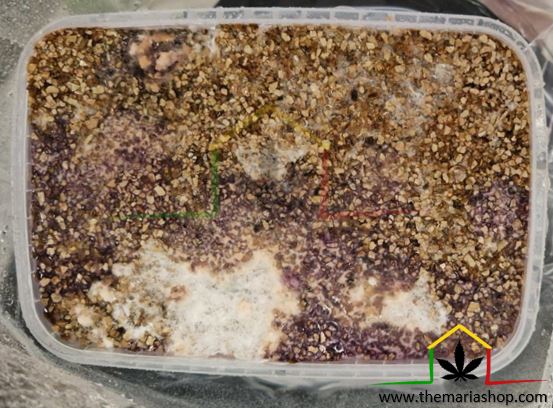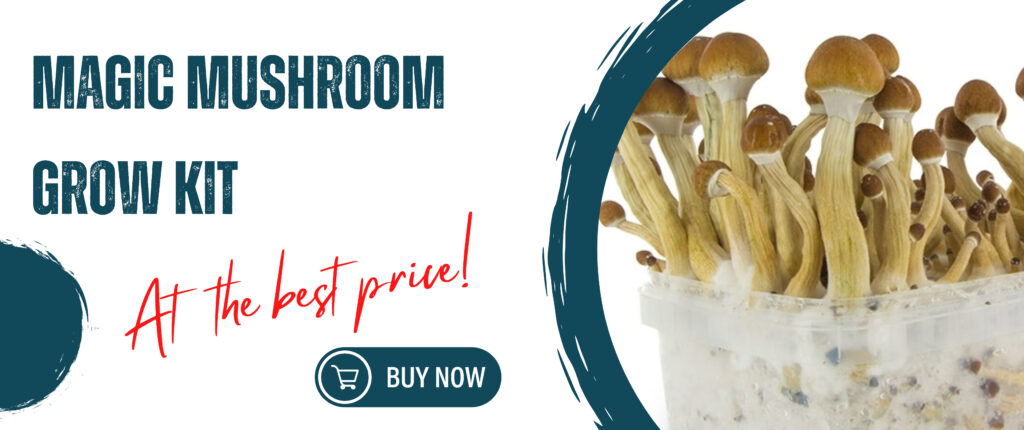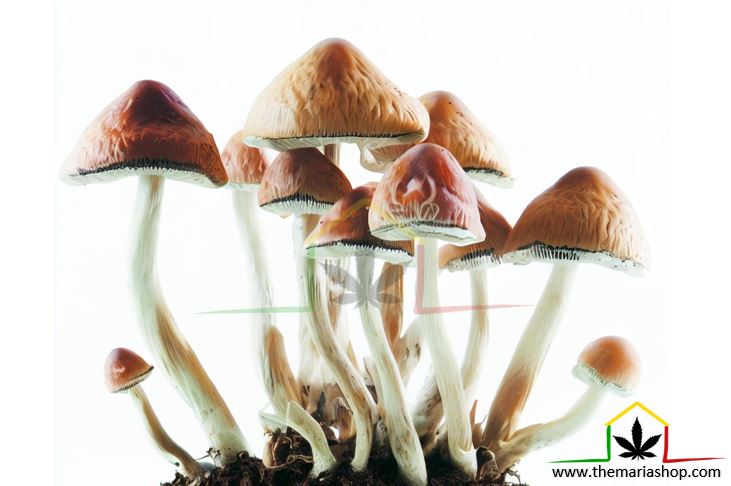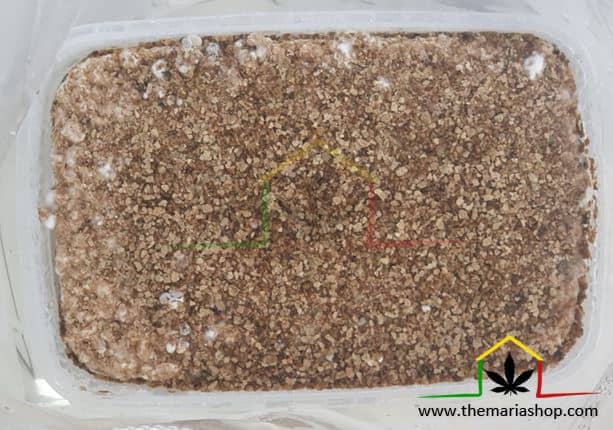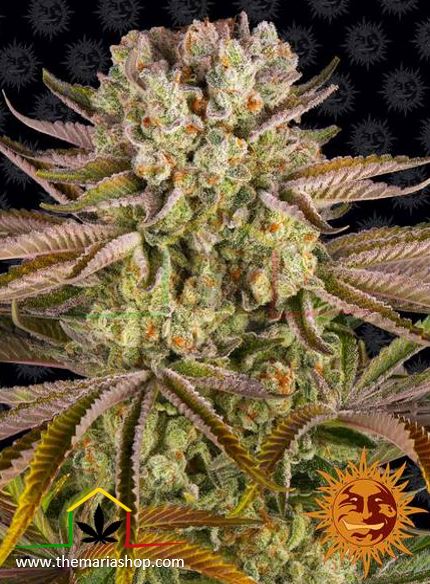When cultivating magic mushrooms there is a possibility that we can get contamination in our mushrooms kit and our cultivation can become contaminated. The cultivation of magic mushrooms can be considered delicate, because at all times we must respect hygiene to the utmost. If we do not comply with this, there is the possibility of contamination of our mushroom crops, be it the substrate, mycelium or even the mushrooms themselves.
If we suffer any contamination in our cultivation kit it can mean the end of our magic mushrooms.
In order to avoid contamination, we must emphasise the hygiene of the cultivation. A culture with a lack of hygiene has a high chance of contracting infections, making the mushrooms kit contaminated. In our online grow shop we will show you how to identify the different contaminations of psichedelic mushroom kit.
Índice
ToggleWhat is the contamination in mushrooms kit?
We would define contamination in a mushroom kit as what we do not want inside our cultivation. Mushroom kits are sterilised products which are designed to develop mushroom cultivation. In the event that any impurities penetrate the bread, they will spread easily, making it impossible for our mushrooms to fruit.
In addition, contamination tends to spread very easily and quickly, which is why we recommend getting rid of the contaminated crop, because, in the case of cultivating more than one mushrooms kit, they can become contaminated.
The main factors that cause contamination are bacteria, mould (fungi) and pests.
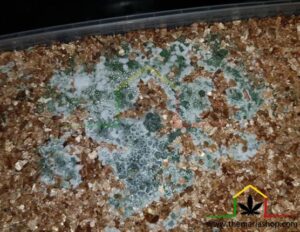
Why is magic mushrooms kit contaminated?
When growing mushrooms artificially, there is a greater chance of contamination. In nature, a balance is achieved between bacteria, fungi and organisms that live in nature, while in indoor mushroom cultivation we find ourselves in a totally sterile environment, in order to create a correct development of the mushrooms. This biological imbalance can lead to infections and our mushrooms kit can become contaminated.
The introduction of external agents into our cultivation (which is totally sterile) where they have the ideal environment, together with the fact that they have no competition to reproduce, will cause our mushrooms kit to become contaminated easily and very quickly.
The contamination of the magic mushroom kit can be one of the factors why our cultivation of psychedelic mushrooms not growing.
Presence of mould on mushroom kit
Mould is still a fungus, but in this case, they are not the ones we would like to have. The mould spreads by creating a network of filaments called hyphae, a kind of small threads. Mould contamination is the most common, because it has the ideal culture medium for its reproduction.
Bacteria in the growing of psychedelic mushrooms
Bacteria are single-celled micro-organisms that reproduce rapidly under ideal conditions. If we maintain good growing hygiene and correct relative humidity, we can avoid their presence.
Pests in kit magic mushrooms
Pests are tiny insects that feed on our mushrooms, transmitting bacteria and diseases, thus contaminating our mushroom kit.
As we have already mentioned, hygiene is the main reason why the vast majority of contamination occurs. Bacteria, mould or pests that enter our growing space will manage to develop their life in it.
Kit contamination can be created through air, water, bad substrate sterilisation, any spores that we have on us… In fact, any individual that gets into our growing will become a pathogen.
How do you know if a magic mushrooms kit is contaminated?
Recognising if your mushroom growing is contaminated is easy, but you will be disappointed. Identifying and knowing the symptoms of possible contamination will help us to act as soon as possible.
The clearest sign that our mushrooms kit is contaminated is its colour.
As we mentioned, mould is one of the main causes of contamination. Mould usually forms with very intense colours, greenish, bluish, grey or even black stains. So if we see any of these coloured spots inside our mushrooms kit, it is very likely that it is contaminated.
In addition to mould, bacteria also contaminate our growing. We will know of their presence when we see slimy spots or a kind of slime on the grain or mycelium. Bacterial contamination is usually caused by an excess of humidity in our growing. On the other hand, bacteria can also develop brown and yellowish spots together with gelatinous texture or crusts.
Not all colours indicate contaminated mushrooms kit.
But here’s the good news, not every colour can mean that our mushrooms kit is contaminated. You should be aware that some blue spots on the mycelium may not be mould. If our mushroom kit has some blue spots on it, they may be bruises, bruises or bruises that the bread has received. It may also be due to the grain pressing against the mycelium, and the mycelium pressing against the inside of the mushroom kit.
On the other hand, the mycelium can take on yellow tones that can be mistaken for bacterial contamination. The yellow colour would indicate that the mycelium is ageing, and is in a phase of production of defences against bacteria.
That is why we recommend that you familiarise yourself with the different types of contamination that can occur in growing magic mushrooms. In this way we will be able to differentiate whether we are dealing with one type or another. To do so, we explain the types of contamination in the growing of magic mushrooms.
Types of contamination in mushroom growing and what to do about them?
Mushrooms kit contaminated by fungus
Green mould
Green mould is caused by an infection of Trichoderma Harzianum. It is the most common infection when we have a contaminated mushrooms kit. It develops as a mycelium-like mould that covers the whole mushroom kit, but when it releases the spores it takes on a very characteristic green colour, which spreads throughout the kit.
Green mould is caused by poor or insufficient sterilisation, poor hygiene, insects and even lack of oxygen.
We regret to say that it is so difficult to get rid of this fungus that the best we can do is to discard the contaminated mushrooms kit growing.
Spider web mildew - Mildew Dactylium - Cobweb
The spider web mould or mildew Dactylium, also known as Cobweb, can play a trick on us right from the start, as its appearance can deceive us. Its appearance is very similar to mycelium, but with a darker, greyish hue.
In addition, its spongier texture will start to cover the whole container, even enveloping the mushrooms, causing soft rot. It develops very quickly, in just a day or two it can spread throughout our growing, leaving our mushrooms kit totally contaminated.
The main reasons for the formation of spider web mould are due to a high percentage of humidity and poor air circulation.
If we suffer from this contamination, it is best to discard our mushrooms kit as it will be completely contaminated in only 2 days.
Overlay
Overlay is a fungus which also resembles mycelium and spider web mould, but unlike spider web mould, it adopts a more cotton-like texture. The fungus will completely colonise the mushrooms kit, eventually overflowing from side to side.
Overlay development is caused by high temperatures and very low relative humidity.
If we suffer from this fungus, we can try to recover the kit. To do this, we will do a “Scratching”, sterilise a knife and carefully remove the layer on the sustrate, inserting the knife between the surface of the mushrooms kit and extracting the white part. Afterwards, we will make a solution of mineral water and hydrogen peroxide to disinfect the top of the mushroom kit.
Pink mould
The neurospora fungus, known as pink mould, is a fungus that usually develops on sustrate, grains or polymers. Pink mould is one of the most lethal and difficult fungi to treat. It usually occurs on the substrate and is easily camouflaged by mycelium. Its appearance is similar to mycelium, but it takes on a pinkish hue.
The appearance of pink mould or neurospora is due to exposure of the substrate to high temperatures for an excessive period of time.
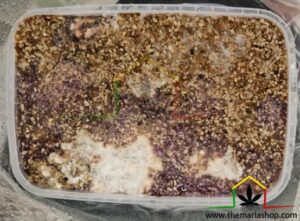
It is a fungus that is practically impossible to eliminate from our growing. That is why the best thing to do is to discard the growing. Moreover, it is a fungus that spreads at an incredible speed. If we have suffered an attack of pink mould, we recommend disinfecting and sterilising vehemently all the material used.
Black mould - aspergillus
Black mould is a mould very similar to pink mould, which develops in the substrate of mushroom kit. It is a mould that rarely appears, although it can be found on organic substrates such as grain or agar. Although it is called black mould, it adopts different shades that can be confused with other types of contamination. The colours adopted by this fungus are yellow, blue, grey, black or green, easy to confuse with other fungi.
What is certain is that, if our mushrooms kit has a colourful shade, it is contaminated.
They appear in growing mediums where the substrate has a practically neutral pH, producing toxic spores that can cause death if inhaled. This is why we must close our growing carefully, avoiding the spread of spores, and throw it away. As with all contamination, it will be necessary to disinfect all the material afterwards, including the growing room.
Penicillium fungus
The penicillium fungus is a fungus that can be easily confused. It can occur throughout the growing of kit mushrooms and can be confused with aspergillus and green mould. It produces blue-green moulds, very similar to other easily confused fungi.
The spores of the fungus are found in the air, which is why we must come into contact with our growing in a completely hygienic and sterilised environment. Being in the environment can be a serious problem for the grower.
It is slower to develop than other moulds, but if it reaches the size of a coin, it is safer to get rid of our mushroom kit.
Dry Bubble - Verticillium fungus
The verticillium fungus, also known as dry bubble infection, produces sticky spores that can affect our growing in one way or another, depending on the stage of development of the mushroom kit.
If we are unlucky enough to have a contaminated mushrooms kit at an early stage, it will create some sort of spots of approximately 2mm in diameter. If we are affected at a more advanced stage of growing, where the mushrooms have already fructified, the mushrooms will twist and the cap will take on a lopsided shape. We will recognise it because in advanced stages of the fungus, some spots similar to bubbles will appear, hence the name, amber in colour, covering the mycelium or mushrooms.
If we suffer from dry bubble – verticillium fungus we should dispose of our mushroom kit carefully, as its spores are very sticky, able to adhere even to dust.
Growing of psychedelic mushrooms kit contaminated by bacteria
Sour rot - Bacillus
Sour rot or bacillus is a type of bacterium that usually develops in grains. The endospores are able to withstand high temperatures by surviving the sterilisation of the substrate.
Bacillus or sour rot appears on the substrate, in the form of a kind of greyish slime that seems to create a wet layer around the grain. Once the grains are infected with this bacterium and the slime appears, they give off a putrid and nauseating smell. In addition, they may cause greyish spots to appear. It usually appears when grains are germinated in jars.
Sour rot is one of the simplest contaminations to eliminate. We must introduce water at room temperature for a whole day, so that the endospores germinate and die when the substrate is re-sterilised.
Bacterial spot
Pseudomonads, also known as bacterial spots, are yellowish or brownish spots that appear on or under the cap of mushrooms.
Some mushroom varieties genetically already have dots or stripes, but they are very different from the bacterial spot. If they are raised, degraded and colourful, it means that our mushrooms kit is contaminated with bacterial spot.
The appearance of these spots on mushroom caps is caused by poor ventilation or excessive humidity in the mushrooms. Being an airborne bacterium, this is why they settle on the caps. It usually occurs when mushrooms remain moist for more than 4 hours after watering.
If we suffer from pseudomonas – bacterial spot, we should reduce the relative humidity of our growing, and then apply a chlorine solution. In the case of applying the chlorine solution with a high percentage of humidity, the bacteria will reproduce faster than the effect of the chlorine.
Pest contamination of magic mushrooms kit
Fungus gnats
Mushroom gnats can appear in our growing mushrooms kit and leave it contaminated. They are flying insects that feed on the mycelium and create tunnels in the mushrooms, transmitting bacteria that are harmful to our growing.
If we are unlucky enough to be contaminated by fungus gnats, we may suffer rotting of the substrate and the mushrooms will be damaged by the tunnels.
Mushroom gnats are 3mm in size with greyish or blackish colours, their wings are transparent, very easy to identify. Whenever we see any flying insect in our growing we must be attentive.
Mites
Mites are not visible to the naked eye, and although some of them are beneficial to crops by feeding on other mites, they can contaminate the growing of mushroom bread. They are arthropods and allow mixing of the organic substrate, actively participating in the fragmentation of the substrate.
To our regret, there are mites that cause damage to our growing. They feed on the mycelium and even destroy it, destroying the mushrooms and even discolouring the surface.
Mites usually appear due to a lack of hygiene, which is why we must be more careful with cleaning if we do not want our mushrooms kit growing to become contaminated.
Tips to avoid contamination of mushrooms kit
The best advice we can offer is to maintain hygiene at all times and to keep the growing parameters ideal. The vast majority of contamination is usually due to temperature and/or humidity instability, together with poor hygiene.
Here are some tips on how to avoid contaminated mushrooms kit.
Green mould
To avoid the appearance of green mould we must clean and sterilise all the material and accessories that we are going to use for our growing. In addition, we must have very good ventilation so that our mushroom kit does not run out of oxygen.
At all times we must maintain our own hygiene to the maximum, as we ourselves can be the main carrier of bacteria.
Spider web mould
To prevent the appearance of cobweb mould, it is necessary to maintain the growing parameters with a relative humidity between 60 – 80% and to maintain good air circulation. It is important to renew the environment every day.
Overlay
Overlay fungus thrives in high temperatures and low humidity. For this reason, we should always maintain a stable temperature and humidity to keep this type of mould away.
Pink mould
Pink mould is a fungus that grows on the substrate of our mushroom kit and develops as a result of prolonged exposure to high temperatures. In order to avoid the appearance of pink mould, we must maintain a stable temperature.
Black mould
Black mould is a mould very similar to pink mould, it develops in the substrate of mushroom kit. To avoid the appearance of black mould or aspergillus we must maintain optimal cleaning and hygiene conditions.
Penicillium fungus
The penicillium fungus contaminates our mushroom bread through the air. To avoid infection, we should sanitise the environment as much as possible and ourselves so that we do not carry the spores ourselves.
Dry Bubble - Verticillium fungus
The prevention of dry bubble – verticillium fungus will depend on the correct hygiene of our growing and growing room. Its spores are sticky and can remain in dust, or be carried by insects such as flies and mosquitoes.
Sour rot - Bacillus
The solution to avoid sour rot is to sterilise the grains in the best possible way. If our mushroom kit is contaminated, we can re-sterilise the substrate by getting rid of the endospores.
Bacterial spot
To avoid bacterial spot formation, the relative humidity of the growing mushroom kit should be kept stable. If we respect the growing parameters with an ambient humidity between 60 – 80%, we will achieve an ideal development of our mushroom kit. If the humidity is higher than this, we can suffer from bacterial stain and have contaminated mushroom kit.
Fungus gnats
Mushroom gnats can contaminate our mushroom kit because they carry bacteria. If we suffer contamination we may have to discard our mushroom kit. To control them, we must maintain strict hygiene and sanitise all the material we use at all times.
Mites
Mites can be beneficial for some crops, but in the growing of our sterilised mushroom kit they can be a contaminating element. To maintain pest control we must have a correct hygiene and strict sanitation of the growing of mushrooms.
Tips for avoiding contaminated mushrooms kit growing
After having seen what contamination is, what types exist and how we can avoid them, one thing has become clear. Hygiene, together with the growing parameters, is a priority for the development of mushroom kit.
Mushrooms kit is mainly contaminated by a lack of hygiene, so the growing areas must be kept clean at all times. The same applies to the material we use and to ourselves, as we are often carriers of bacteria.
If we respect the parameters of temperature, humidity and light, our growing of mushroom kit will be a success, without ending up contaminated in the rubbish.
In Themariashop we will be happy to answer all your questions, so you can contact us, and the team will be happy to help you solve them.

